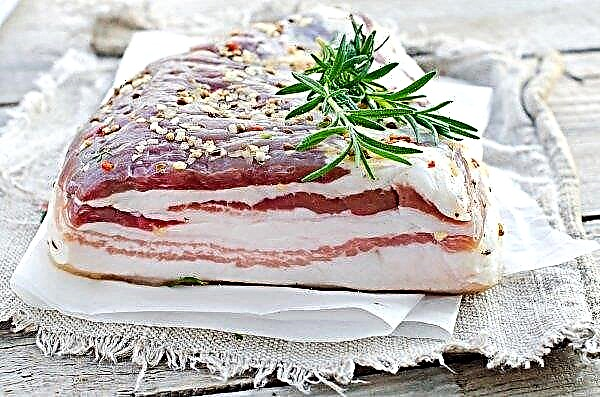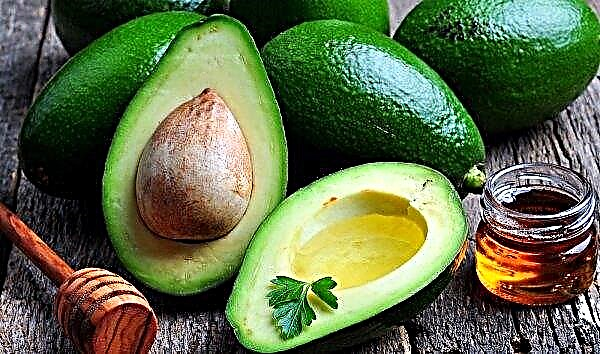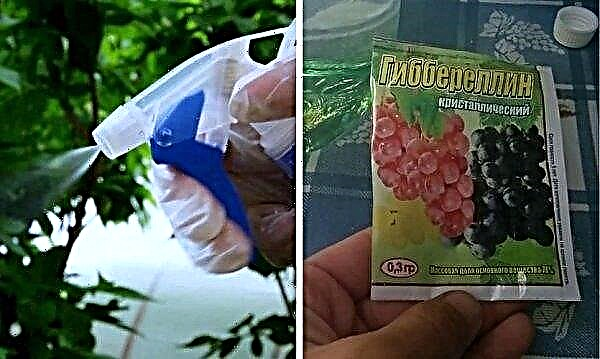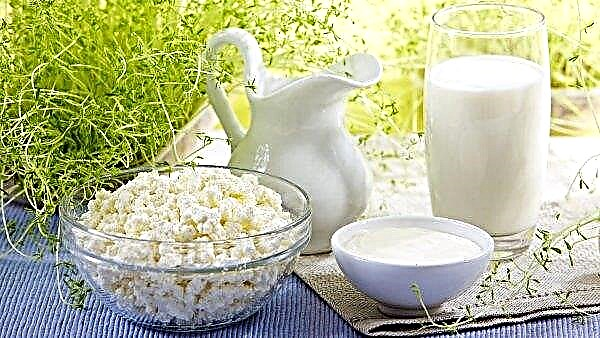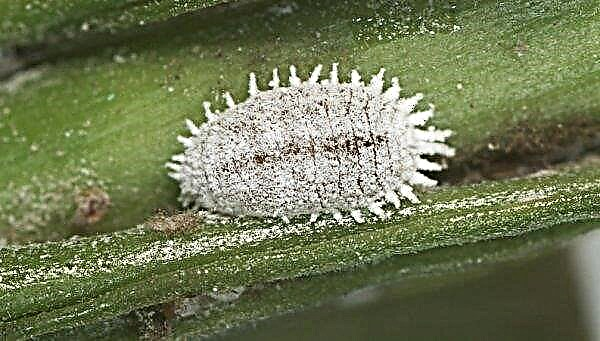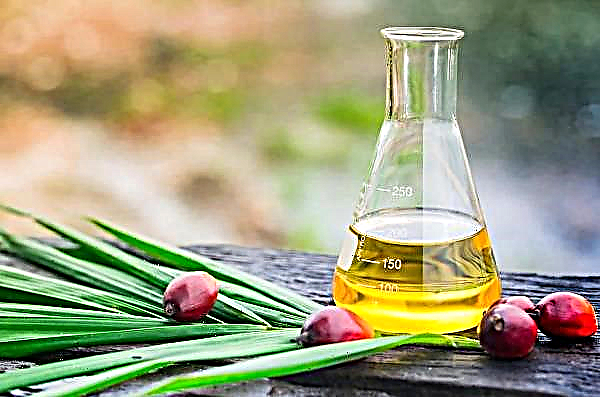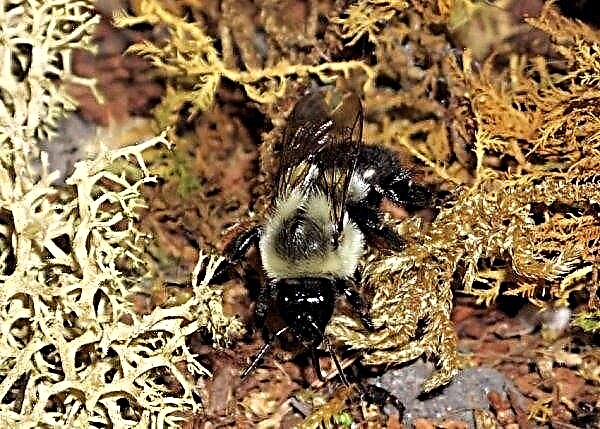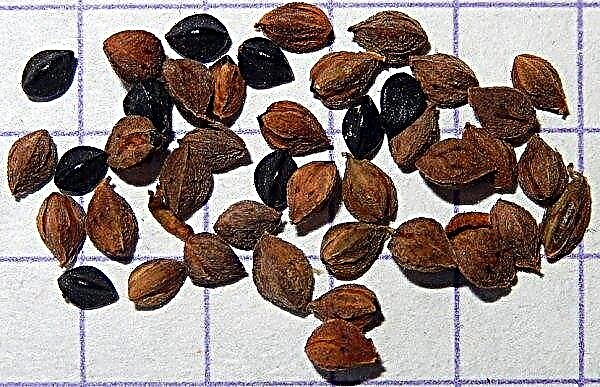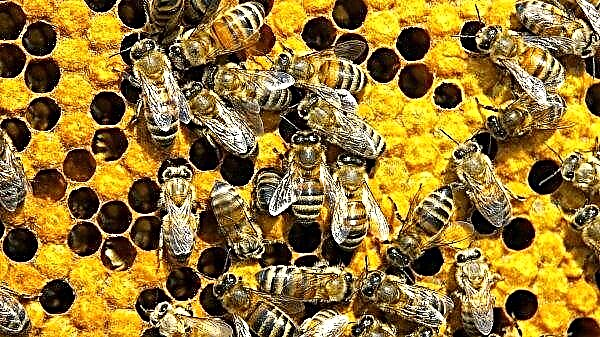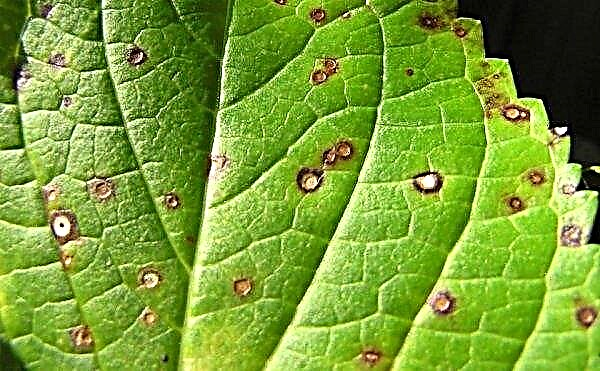In early spring, primroses, magnificent primrose inflorescences, appear of extraordinary beauty. A variety of varieties, sizes, colors makes this plant perfectly suitable for cultivation, satisfying the needs of the most demanding gardeners. Methods of growing these delicate flowers, the features of care and reproduction are described below.
Varieties of primrose stemless
The homeland of primrose is stemless (it is also an ordinary primrose) is Central and Southern Europe. The Latin name is Primula vulgaris. It grows in the meadows of the Alps or the edges of the forest when the snow begins to melt.
The rhizome is rather short, with thick roots in the shape of a cord. Leaf shape is lanceolate; their length is up to 25 cm, and their width is about 6 cm. In winter, they are partially preserved. Peduncles are short, only up to 20 cm tall. Flowers - pale yellow or white with purple, collected in a sitting inflorescence. They have wide petals, divided into two parts.
When the plant blooms, in appearance it is very similar to an elegant bouquet composition. The time when the plant blooms is March, but sometimes flowering is repeated in September. Cultivated varieties of flowers have been grown since the 16th century.
Did you know? In some areas of Germany it was believed that primrose is the key to marriage. If an unmarried girl finds this primrose on Easter, in the same year she will be led down the aisle.
Popular varieties of primrose stemless:
- Virginia He has white flowers, and their pharynx is light yellow.

- Celeroi. It is represented by blue flowers with a yellow throat.

- Giga White. The flowers of this variety are white.
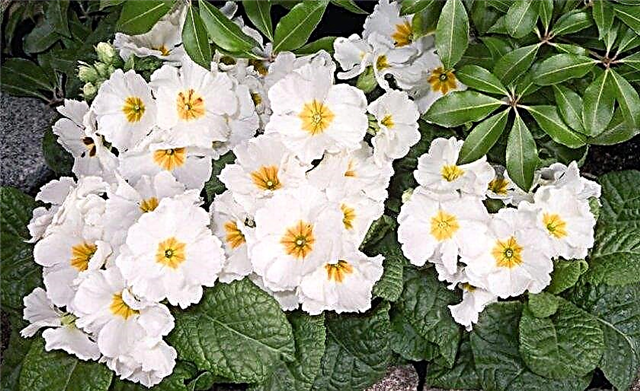
- Potsdam giant. Perennial variety, the flowers are quite large, very beautiful, of all kinds of colors with a yellow middle. Inflorescences are located slightly above the leaves. Grown both in pots and in open ground. Prefers to grow in shady areas.
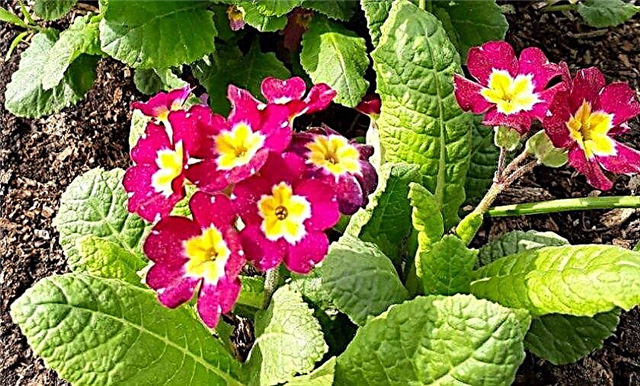
- Terry primrose of the Rosanna series represented by a variety of colors. At a detailed examination, you can see that the petals on the flower, like those of other non-terry varieties, are five, but they have a wavy edge, the petals are not open to the end. This does not allow you to see the middle of the flower, making the primrose visually terry. Such varieties do not have stamens and pestles - they are sterile. The propagation of such flowers occurs exclusively in the vegetative way.
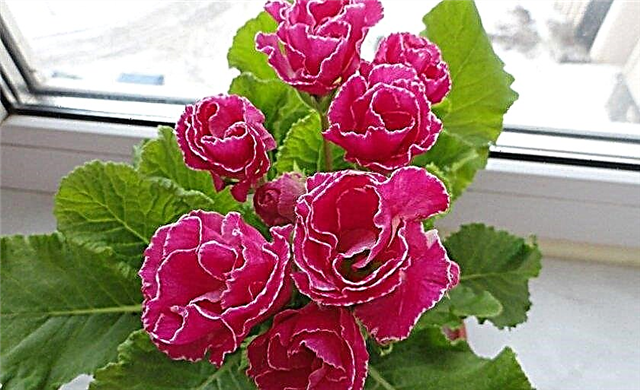
- Two-tone grade of the Pioneer series. The flowers in this series are pink in various shades with a middle yellow color and a purple border; sometimes there are purple or orange variations. Flowering begins in early spring. Without division, 5 or 6 years grow in one place.

- Grade Alaska, is presented in two color options - yellow with a border of red color and blue, with an eye of yellow color and a white pharynx.
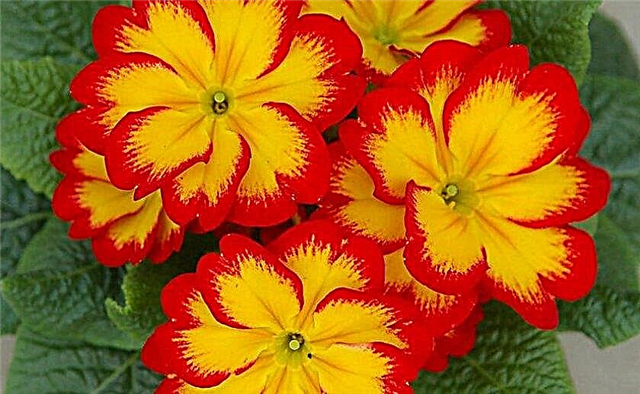
- Hybrid variety of Example F1 has 14 shades. This two-year-old plant is great for growing in pots and for early spring distillation.
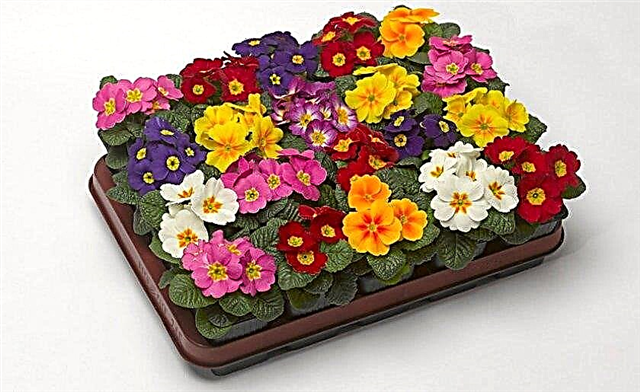
- Terry variety of the Palazzo series It is presented in three color variations: pink, burgundy yellow and red yellow.
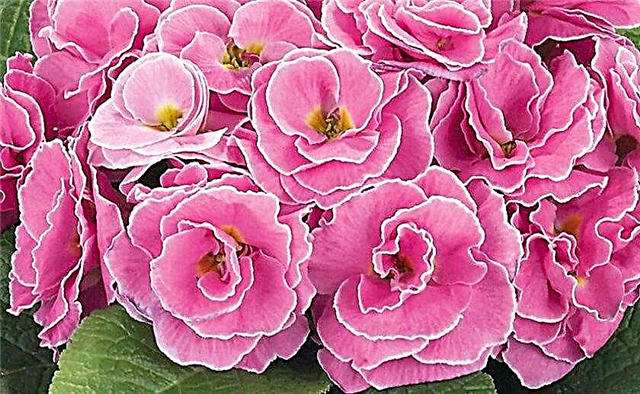
- Varieties Meteor, Danova Bicolor - The largest primrose, which is also called "vyrviglaz."
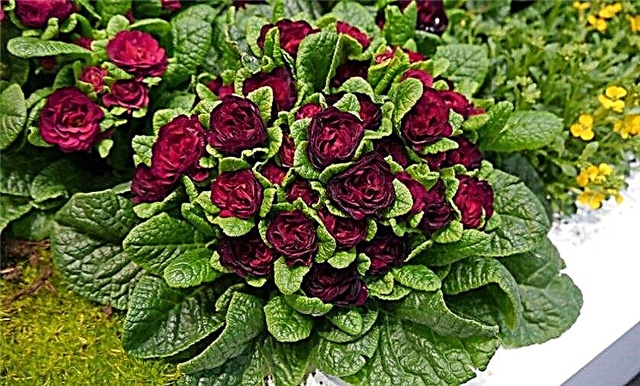
- Captain blood - dense terry flowers of blue color. It is considered a well-growing, stably flowering variety.

- Dawn ansell - This is a variety with dense green-yellow flowers.
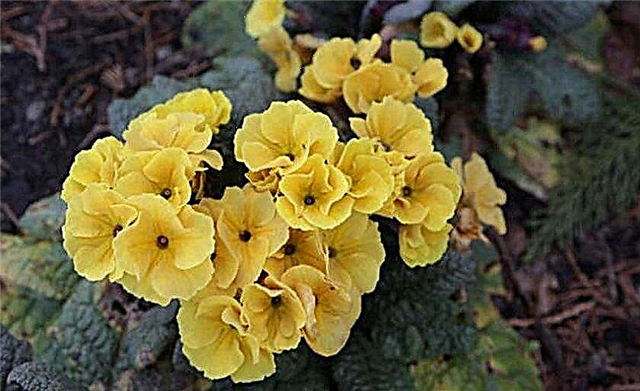
Pests and diseases
After planting primrose stemless, you need to carefully inspect the plants so as not to miss the appearance of pests or diseases.
Important! People who suffer from allergic diseases need to be careful about these colors. Some varieties of primrose are very strong allergens.
Primrose Diseases:
- gray rot caused by an excess of nitrogen in the soil or excessive humidity;
- powdery mildew, occurs due to increased humidity;
- tracheomycosis or vascular wilt - caused by damage to fungi from the genera Fusarium and Verticill;
- ramulariosis, occurs due to waterlogging;
- leaf damage (septoria, anthracnosis, ascochitosis) - infection with fungi of the genus Mycospherella.

Possible plant pests:
- aphid;
- all kinds of caterpillars;
- slugs;
- ticks, etc.

The most dangerous are fungal diseases, described in detail below.
Powdery mildew
A widespread disease of primrose stemless is powdery mildew. Its cause is a pathogenic microorganism that lives exclusively on the tissues of a living plant, which is very dangerous and destructive for them. This is a disease not only of flowers, but also of other garden crops.
Powdery mildew affects the plant's leaves: in accordance with the name, it manifests itself in the form of white powdery plaque. This plaque is a mushroom mycelium growing on a leaf plate. Gradually the leaves die off; because of this, photosynthesis worsens, the flowers weaken and stop growing. Affected parts will quickly fade and fall. With severe infection, the culture dies.Did you know? Even in ancient times, primrose was considered a medicinal plant of Mount Olympus. Its Greek name “dodecateon” is translated as the flower of the twelve gods. People believed that it cures all diseases.
 In winter, the fungus is in fallen leaves, tree bark, plant debris. The temperature needed for its active growth is + 18 ... + 20 ° С, and humidity is more than 60%.
In winter, the fungus is in fallen leaves, tree bark, plant debris. The temperature needed for its active growth is + 18 ... + 20 ° С, and humidity is more than 60%.
The following factors indirectly affect the development of this disease:
- excessive spring pruning;
- fertilizing soil with nitrogen fertilizers.
The negative effect of powdery mildew is eliminated by a decrease in its destructive mass. This means that it is necessary to get rid of fungal spores and mycelium. For this, two methods of elimination are used: bacterial (using bacteria that develop during the fermentation of dairy products, hay, manure) and chemical (spraying with fungicides).
In addition, it is necessary to carefully cut the affected stems and leaves in the spring, carefully remove and burn the damaged parts of the plant in the autumn, dig and fertilize the soil with organic and phosphorus compounds.
Chemical preparations that fight powdery mildew include copper sulfate solution, Topsin-M, 0.5% soda ash solution with soap, Bayleton, Topaz, Sulfaride, and 1% colloidal sulfur suspension.
Given the dangers of chemical treatment, in the early stages of the disease it is advisable to fight the bacterial method. It consists in spraying plants with infusions of manure, fermented herbs, sour dairy products.
Gray rot
The fungus Botrytis cinerea causes the appearance of gray rot on the primrose. The disease manifests itself when spotting occurs with a plaque of gray on the leaves or peduncles. The spots are wet and rot, with time they affect the entire part of the plant, after which it rots. If the surface is severely damaged, the culture may die.
 The causative agent of the disease is quite tenacious - it persists in the ground for up to two years. It can be transmitted with a substrate, with water, through the air, from infected crops to non-infected ones.
The causative agent of the disease is quite tenacious - it persists in the ground for up to two years. It can be transmitted with a substrate, with water, through the air, from infected crops to non-infected ones.
Favorable conditions for the development of the disease:
- lack of light;
- waterlogging of the soil;
- excess fertilizer;
- poor ventilation;
- heat;
- too humid air;
- too thick landing.
Ramulariosis
The causative agent of ramulariosis is the fungus Ramularia primulae. The first symptom is that large spots of oval shape and yellowish appear on the leaves of primrose. With the further development of the disease, they turn brown in the center, it rots, a hole appears on the sheet. From the wrong side of the leaf plate, you can see a lighter mushroom coating. This disease is common in young plants, especially if they are kept in moist and cool conditions.
This disease is common in young plants, especially if they are kept in moist and cool conditions.
In the trimmed parts of diseased flowers, the pathogen is preserved, so the burning of such residues is an important condition in the fight against this disease. In order to protect a flower from it, you need to observe the temperature regime, carry out proper watering, use high-quality and loose substrates.
When obvious signs appear, it is necessary to cut off and completely destroy the affected parts of the crops, as well as treat the flowers with fungicides (Fundazol, Vitaros).
Did you know? Primrose was the main component of the love potion, which was prepared by the Celtic priests - the Druids.
Seed cultivation
Growing primrose from seeds is quite easy. To do this, you need to collect seeds from your flowers and plant, the plant is characterized by good germination. However, it is worth remembering that plants grown from their seeds lose quality varietal properties. Because of this, new shades of primrose can turn out. Boxes with flower seeds should be stored at a temperature not exceeding + 7 ° C.
First you need to shake the seeds on a saucer from the seed boxes and be sure to pickle them before planting. This is done to prevent the development of fungal diseases (only purchased seed is not processed). They make the treatment with a solution of potassium permanganate (0.5–1%), placing seeds in it for 20 minutes.
Important! Since fresh seeds germinate very poorly, they must be placed in the cold for a short time before sowing. This mechanism is laid down in them by nature, since they lie in the snow until spring, and then germinate after the snow melts.
Soil and fertilizers
Primrose grows well on loamy soils, preferring partial shade to sunny areas. Although they can be grown on sunny beds with sufficient watering. If seedlings are grown, then it needs a land mixture, which consists of sheet land, turf, coarse sand, in a ratio of 4: 2: 1.
You should not take soil from the garden - it is relatively heavy and not saturated with nutrients. The best choice is purchased or forest soil, or a combination of purchased with peat.
The most suitable ground for these flowers should be loose and light, absorb moisture well and have drainage. They are also grown on clay soils, but previously they are enriched with manure, sphagnum and vermiculite with the addition of sand.
During the vegetative period, plants are fed once every two weeks. Before the formation of the buds, infusion of manure, bird droppings or nitrogen fertilizers is used. Manure is bred in the ratio of 1 kg per 10 liters of water, and litter - 100 g per bucket of water. Such dressings are needed for the rapid growth of plants. When buds form, they are replaced with phosphorus or potassium fertilizers - phosphorus and potassium contribute to good flowering.
Humidity
When growing primrose stemless optimal humidity is not more than 85% and not less than 75%. The plant does not tolerate dry air, but with sufficient moisture it develops perfectly.
If the tips of the leaves dry out, this means that the air surrounding the plant is dry. To eliminate the dryness of the air in the room, spray the primrose with warm water. At the same time, try not to fall on the flowers, they do not like this. You can put the pots with primrose in the pallets filled with wet expanded clay - this normalizes the humidity of the surrounding air.
You can put the pots with primrose in the pallets filled with wet expanded clay - this normalizes the humidity of the surrounding air.
Temperature
The most acceptable temperature for the growth of primrose crops is about + 20 ° С. With its decrease, seed germination decreases. Raising reduces the flowering period. Under natural conditions, the plant tolerates low temperatures well, but really does not like frosts.
When growing in pots, the air temperature is needed around + 18 ° C. With the advent of buds, the primrose is moved to cooler conditions, not exceeding + 10 ° C, until the appearance of flowers. When the flowers bloom, the temperature is increased to + 15 ° C. Failure to comply with this regimen causes increased leaf formation when the flowers wilt.Important! During flowering in nature, the optimum air temperature is about + 9 ° C.

Lighting
Although primrose stemless refers to photophilous plants, you must avoid direct sunlight. When grown at home, it is placed on a windowsill, which is well lit. Diffused light is best.
If the primrose was not placed in the basement for the winter period, it needs to organize additional lighting. To do this, you can use a fluorescent lamp or phytolamp. Direct sunlight can cause burns that are detrimental to delicate leaves.
Landing pattern
Home The method of growing primrose from seeds involves several stages:
- Release the collected seeds from the fruit.
- Dress household seeds with a potassium permanganate solution (not applicable to purchased seeds).
- Put clean snow in containers.
- Spread the seeds in the snow.
- Compact snow when you sow primrose.
- Indicate the variety with plaques, if there are several.
- Close the lid tightly and secure so that it does not open.
- Put in the refrigerator for 2-4 weeks, or in the cold.
- After stratification (exposure to cold), the crops are placed on the window, but so that direct sunlight does not fall on them. The temperature for emergence of seedlings should not exceed + 18 ° C.
- When two leaves appear, it is necessary to pick seedlings.
- Disassemble large nests on a silver platter, trying not to injure the roots.
- Plant seedlings one at a time, observing a distance of 5 cm between them. You can plant them in single pots.
- Water the seedlings. After transplantation, they subsequently need regular top dressing and watering.
- When the seedlings grow, you can dig it in a shady place in the garden until the end of summer.
- Plants are planted on a permanent place in mid-August, observing an interval of 25-30 cm between them.

The planting patterns of primrose are different: they are planted with lines, lines, curved curves, concentric circles. But it is necessary to observe an interval of 15-30 cm between plants regardless of varietal varieties.
Other breeding methods
Primrose can be propagated by dividing the bush. Divide the primrose before flowering, when it throws buds, or in late summer - early September. It is advisable to do this once every 3-5 years to update the plant.
Progress:
- Dig a bush with an earthen lump.
- Wash off the soil in a bucket of water.
- Immerse the rhizome in a weak solution of potassium permanganate.
- Cut it with a knife into parts with sockets. Each part must have at least one kidney and several roots.
- To dust the places of cuts with crushed coal or ash.

If the plant has one leaf rosette, or its root system is weak and it is not possible to divide the bush into parts, a propagation method such as cuttings is used. It consists in separating near the base of the neck of the root of the mother bush a leaf with a growth bud and petiole. The separation is made with a sharp knife. The upper part of the leaf is cut off, and the stalk is planted in a specially prepared container with peat filling.
Care for primrose stemless
Primrose is a widespread plant. This is due to the fact that caring for it is quite simple. The main thing is to comply with the following conditions:
- Humidify the air in the room.
- Avoid exposure to sunlight.
- Maintain optimal humidity, avoid waterlogging.
- Do not overdo the fertilizer. Carefully use nitrogen fertilizers.
- Get rid of faded peduncles and yellow leaves.
- Use optimally suitable primer.
- Be sure to do the drainage.
 Gardeners love primrose, because it is naturally beautiful and not whimsical, but compliance with these conditions is very important for the plant.
Gardeners love primrose, because it is naturally beautiful and not whimsical, but compliance with these conditions is very important for the plant.Watering
As soon as the primrose is planted in the ground, they need to provide regular watering. Usually it is carried out once a week. When the weather is hot, the plant is watered 2 times a week. For 1 m² of plants, up to 3 liters of water are used.
Important! Excessive watering must be avoided - with it there is a risk of developing fungal diseases. However, insufficient watering leads to drying out of the root system, as a result of which the stem of the plant may die.
Soil loosening
Flowers need loosening the soil. In the spring it is regularly loosened, especially when it is compacted. In the process, weeds that can drown the plant are harvested. Loosen the ground carefully, trying not to sprinkle the recovery point. In the summer, cultivation is stopped because the flowers grow in width and fill the empty space.
In summer and winter, the earth is sprinkled with mulch. In winter, this protects the plant from the cold, and in summer - from drying out. Varieties with large and double flowers must be covered with fallen leaves for the winter (a layer of about 10 cm), and special material for covering or broken branches are sprayed on top of them. In early spring, when the snow melts, it is very important to clean the evening primrose from last year's foliage.
Top dressing
Perennial primrose varieties need fertilizing; it is usually done once a week. They begin to feed the plant as soon as the leaves appear, and finish when the flowers fade. For this purpose, use a solution of mineral complex fertilizer, but in half dosage. It is necessary to alternate potash and phosphorus fertilizing.
Such a scheme is also possible:
- In the spring, the bushes receive organic fertilizer; You can scatter 1 tbsp. l nitrogen-containing fertilizer on melted ground. It is necessary to carefully apply nitrogen fertilizer, since its excess does not allow the primrose to bloom.
- In June and August, fertilizing with potassium phosphate fertilizers is carried out - this will give the plant strength for development in the next season. For 10 l of water, 20 g of superphosphate and 15 g of potassium are taken.
- Rhizomes of primrose, which came to the surface in autumn, must be sprinkled with humus.

Transfer
Plant transplants are performed in spring when the plant fades. For her, use a pot slightly larger than the previous one. The best time for a transplant is August or early September; the beginning of spring is also suitable.
For primrose growing in the garden, it is recommended to change the planting place every 3-4 years, because the bush is transferred, the root system in some places is shown on the surface, the flowers become smaller, varietal qualities are lost. Therefore, after three years, it is desirable to transplant and rejuvenate the flower garden.
Pruning
In early spring, it is necessary to prune the foliage of primrose, immediately after the snow melts. In autumn, it is impractical to do it, since the leaves nourish the weak root system until frost, and the dried leaves protect the plant from frost.
Important! Only the buds that have faded are cut, as they take away the strength from the plant.
In addition, primrose can hardly tolerate both high and low temperatures, so it is advisable in addition to cover the flowers with dry straw or broken branches for the winter.

So, the primrose stemless pleases with the first spring flowers. They are perfectly grown in the garden and on the windowsill, bloom for a long time, and easily propagate from seeds and division. The variety is actively used in landscape design. From these beautiful plants, picturesque borders or rugs are obtained, live paintings or ornaments are created. With proper and high-quality care, primrose will delight you with its unique beauty for a long time.













